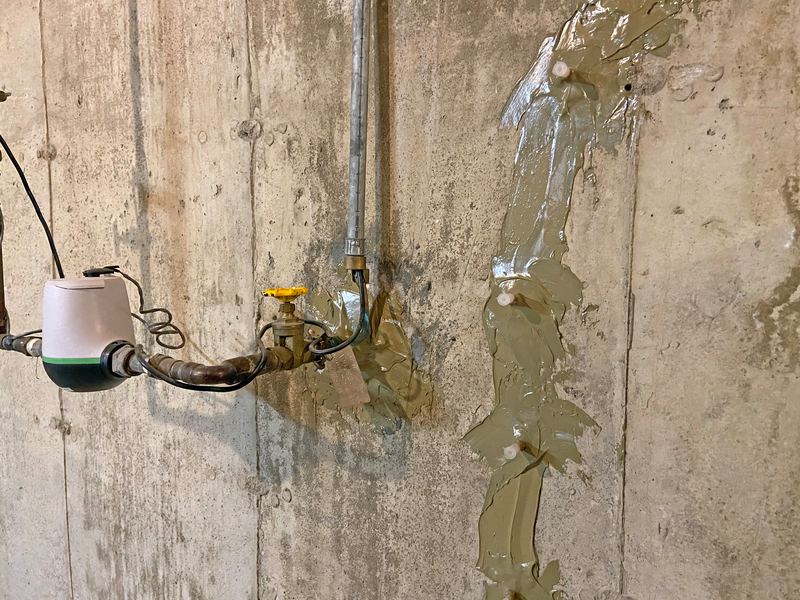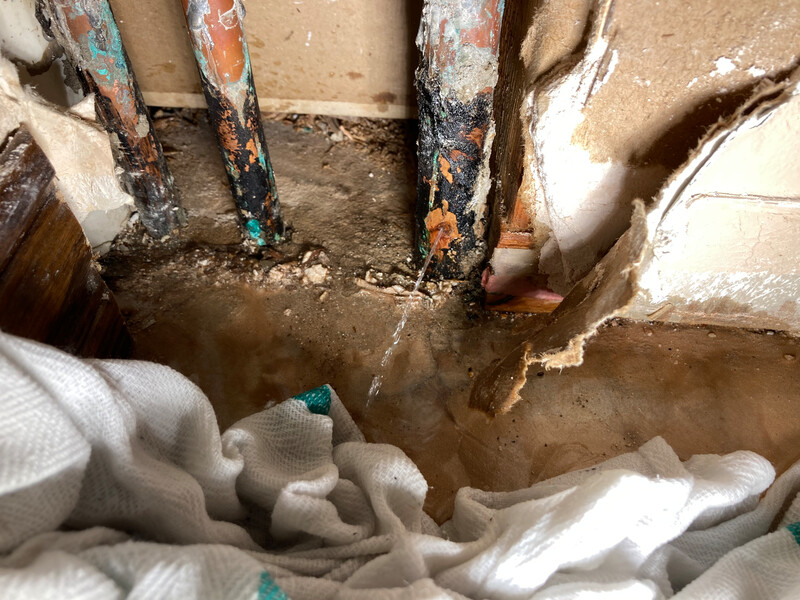- AppliancesElectriciansHVACLandscapingLocksmithPest ControlPlumbingRenovationRoofingT V RepairAll Home Improvement
- Car AccidentClass ActionCorporate LawCriminal DefenseDivorce LawEmployment LawFamily LawFinancial LawLegal AidMedical Injury LawyersMedical MalpracticeReal Estate LawWater Fire RestorationAll Legal
- InvestmentRetirementAll Finance
- Animal InsuranceAutoGeneral InsuranceHealth PolicyHome RentersAll Insurance
- DentalHealth SpecialistsAll Medical
- Animal CareVeterinaryAll Pets
- Auto GlassTowingAll Automotive
5 Potential Problem Areas in Your New Old Home
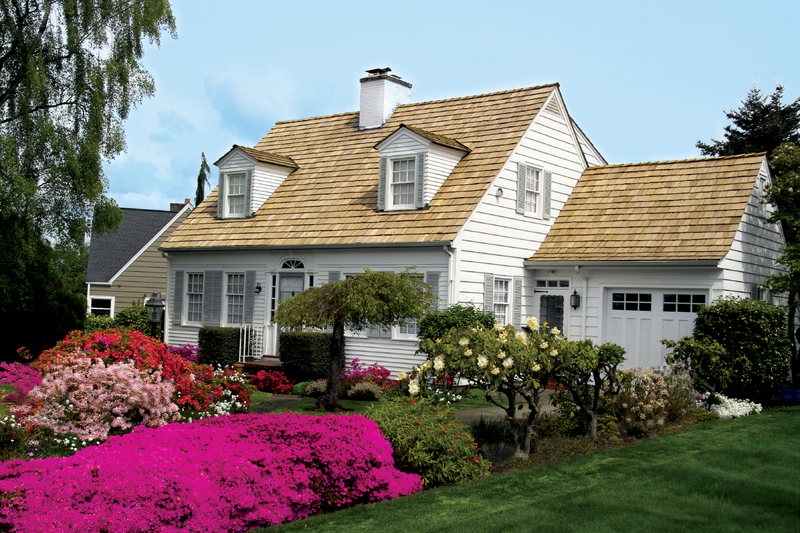
Older houses have a certain charm and character not often shared by their modern counterparts, and they’re usually a lot more affordable to boot. However, everything deteriorates over time. Some of the old and outdated features found in older homes can be incredibly expensive to repair or replace.
Read More Home Improvement Articles
So before you sign the dotted line on the home you’re considering, make sure that you and your home inspector look for these common — some of the most expensive — old-home problems.
Look For These Problems When Buying an Older Home
Foundation and Structural Issues
Foundations can settle and crack for a variety of reasons, including excessive soil moisture, tree roots, seismic activity, freeze-thaw cycles and natural settlement over time. When this happens, serious structural damage and compromised structural integrity of the home often results.
Signs of a settling foundation include:
- Cracks in interior and exterior walls
- Uneven and off-level floors
- Visible cracks in the slab
- Windows and doors that are hard to open or won’t latch
If you identify any of these signs, you should hire a structural engineer to assess the extent of the damage and determine the necessary repairs. The cost of repairing a foundation can vary greatly based on the repair, from a few hundred dollars to repair a minor foundation crack, to over $20,000 to replace the entire foundation. Those costs don’t include the secondary structural damage caused by the underlying foundation issue, which can also vary considerably.
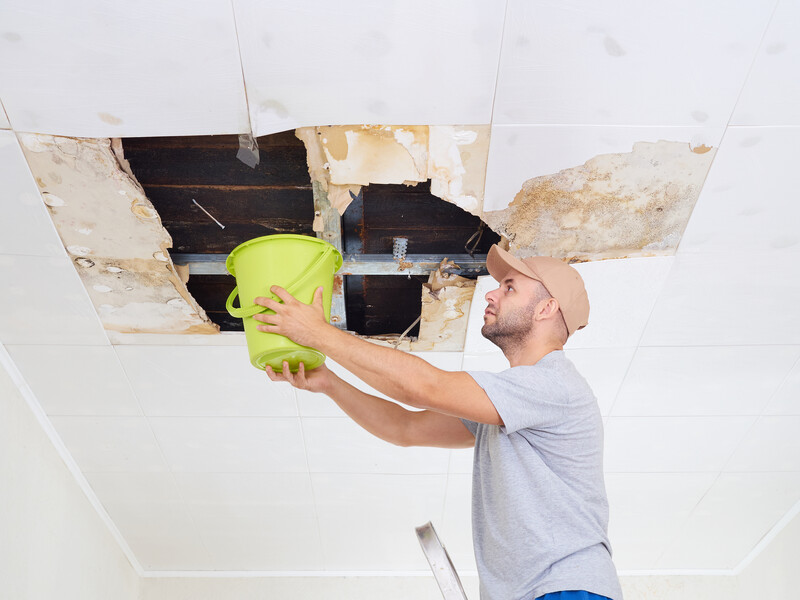
Roof Leaks
The most common roofing material is asphalt shingles, which can last anywhere from 15 to 50 years depending on the environmental factors they’re exposed to, the quality of the installation, and how well they were maintained.
Shingles that are past their prime are prone to leaking, which can damage the structural integrity of the roof and can cause interior water damage or mold development.
Indications of a possible roof leak include:
- Water stains on the walls or ceilings
- Water stains or damage in the attic, especially on the insulation, roof sheathing (plywood sheets below the shingles), ceiling joists and roof rafters.
- Damaged or missing shingles
- Damaged or missing flashing, which is the flat and thin metal sheets around the roof’s perimeter, joints and seams used to prevent moisture penetration into those areas.
If you identify any of these signs, it’s important to consult a roofing contractor to assess the extent of the damage and determine the necessary repairs. The costs of roof repairs can vary wildly. Replacing some shingles or flashing is a relatively cheap project, compared to the tens of thousands of dollars it costs to replace an entire roof.
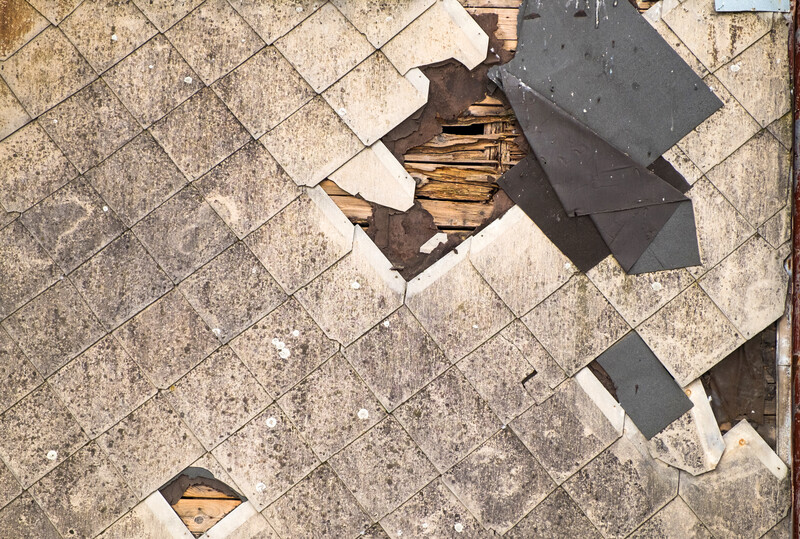
Toxic Materials
Homes built before 1980 often used materials that were eventually banned after being found to be toxic, like lead and asbestos.
Lead acts as a neurotoxin if it’s inhaled or ingested, and it’s especially harmful to young children. Before it was banned in 1978, it was widely used in paint and plumbing fixtures. Unfortunately, lead paint is difficult to identify with an untrained eye, but a lead paint test kit can be used to determine if the paint contains lead. However, you can check for a lead pipe by scraping it with a screwdriver. If the scraped part is silver and shiny, it’s a lead pipe. While lead paint usually isn’t harmful unless it becomes airborne in the process of sanding or scraping it, lead pipes can contaminate the home’s drinking water.
Lead paint can be dealt with by painting over it to seal it in, or by having the paint completely removed. If you want to remove the lead paint, you should hire a professional that specializes in lead removal. Doing so can cost between $8 and $17 per square foot.
The best way to handle lead pipes is to have them completely removed and replaced with new ones, which can cost upwards of $5,000. A more affordable (but less effective) alternative is to either install a whole-home water filtration system or have individual filters installed on sink faucets, shower heads and hose bibbs.
Asbestos was a common insulation and fireproofing material that was banned in 1989 when it was found to cause lung cancer. Asbestos should only be removed by a licensed remediation specialist, which can cost $1,000 to $30,000 or more, depending on the extent of the removal.
More Related Articles:
- How Much Does a Home Inspection Cost?
- 4 Tips for Hiring a General Contractor for Your Next Remodeling Project
- Should You Hire a Contractor or a Handyman?
- 5 Things to Look For When You're Hiring an Electrician
- What to Look for When Hiring an Exterminator
Plumbing
Plumbing pipes corrode over time, leading to poor drainage, lacking water pressure, leaks that can cause water damage or pipes that rupture completely and flood the home.
Plumbing pipes can be made from a number of different materials with varying lifespans. Lead and PVC pipes (plastic and white in color) can last at least 100 years. Copper and brass pipes can last up to 40 years, while galvanized steel pipes (metallic gray in color) may last as few as 20 years. Polybutylene pipes (usually gray and stamped with the code “PB2110”) have a lifespan between 10 and 15 years.
Galvanized steel pipes were regularly used until the 1970s, but they‘re still allowed by building codes despite their short lifespan, tendency to cause water discoloration and poor water pressure once they begin to corrode. Polybutylene pipes were common in homes built between 1970 and 1990. However, they’re now against building codes because they rapidly corrode and fail when exposed to chlorine. If your new-old home has either type, it’s likely that all the piping will need to be replaced.
The plumbing lines in an older house should be inspected for material, age and condition by a licensed plumber. The cost to replace plumbing pipes can range between a few hundred dollars for isolated sections of pipe, to tens of thousands for a whole-home replacement.

Mold and Mildew
Mold in attics, basements, crawlspaces and interior walls can occur in homes, both new and old. However, older homes often don’t have the underfloor or perimeter drainage that’s standard in newer homes, so moisture is more likely to accumulate, and mold is more likely to develop. Older homes are also more likely to have cracks in the foundation, which lets moisture seep in, along with leaking roofs and pipes.
Mold can deteriorate the material that it’s growing on (like wooden structural framing members), and the spores the mold releases can trigger asthma, allergies and respiratory irritation when inhaled. If you see visible signs of mold — especially black mold — or smell a musty odor, you should have the home inspected by a mold remediation specialist to find the mold and determine the extent of the damage. The cost for mold removal is typically between $10 and $25 per square foot.
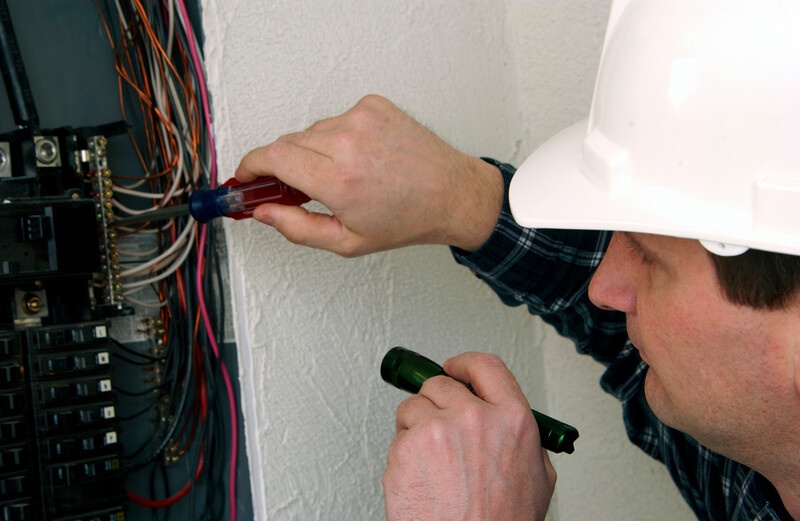
Old and Outdated Electrical Wiring
The lifespan of electrical wiring is determined by the condition of its insulation. Once the insulation deteriorates and the underlying wire is exposed, short circuits, electrical shocks and electrical fires can result. While modern wiring can last over 100 years, wiring installed before 1960 usually lasts around 70 years, which means it may be nearing the end of its suggested lifespan.
Signs of bad wiring include:
- Dim or flickering lights
- Warm electrical outlets or light switches
- Isolated power outages in certain rooms
Homes built prior to 1960 may have knob-and-tube wiring. This is a two-wire system that doesn’t have the ground wire used in modern wiring. Along with only having two wires, the identifying characteristic of knob-and-tube is that the wires will run through porcelain cylinders, called “insulators.”
The absence of a ground wire increases the risk of electrical surges and shocks, which can damage electronics and cause electrocutions. Because of this added risk, many homeowners insurance companies won’t insure homes with knob-and-tube wiring, and its presence may hinder your ability to obtain a mortgage for the home.
Additionally, homes with knob-and-tube wiring use two-prong electrical outlets. These aren‘t compatible with modern, three-prong electronics. While there’s no legal requirement to replace knob-and-tube wiring, it’s often recommended.
It’s highly recommended to have the home inspected by a licensed electrician to assess the condition of the home’s electrical wiring. Repair costs vary depending on what needs to be fixed. To have isolated sections of wire replaced, it may only cost you a few hundred dollars. On the other hand, it may cost thousands of dollars to have the entire home rewired.
Elocal Editorial Content is for educational and entertainment purposes only. Editorial Content should not be used as a substitute for advice from a licensed professional in your state reviewing your issue. Systems, equipment, issues and circumstances vary. Follow the manufacturer's safety precautions. The opinions, beliefs and viewpoints expressed by the eLocal Editorial Team and other third-party content providers do not necessarily reflect the opinions, beliefs and viewpoints of eLocal or its affiliate companies. Use of the Blog is subject to the
Website Terms and Conditions.The eLocal Editorial Team operates independently of eLocal USA's marketing and sales decisions.


